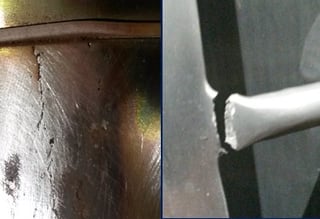We know downtime and emergency shutdowns can cost your company money and throw off production. Here are some ways to recognize possible complications before they lead to a shut down:
- Perform routine visual inspections of your processing equipment. This helps with easy identification of problems such as leaks, vibrations, and everyday wear and tear on equipment (loose bolts, corrosion, cracks, etc.)
- Install internal diagnostics within your equipment. Some problems are not easy to recognize with visual inspections. Internal diagnostics will detect a problem and attempt to rectify it as soon as it occurs. A high level probe is an example of an internal diagnostic. It will identify when the contents of the tank reach the maximum fill and then alerts the fill operator to discontinue the flow into the tank.
- Track the depreciation of equipment: If a company records when a piece of equipment begins to malfunction, then in the future they will be able to schedule the maintenance or replacement of parts more accurately. Scheduled maintenance is cheaper and more efficient than unscheduled shutdowns.
 |
|
Two frequently overlooked issues: small cracks and broken welds |
When issues are found, make the necessary repairs before the small problems turn into larger ones. For example, this cracked tank and broken weld seen on the right, if not fixed, could lead to product contamination, compliance issues, and unusable equipment.
Operating with broken equipment can lead to lower quality products, longer production time, higher maintenance and production costs, and the possibility of a plant shutdown.
If you're ready to repair some equipment in your facility, prepare for the estimation process with this handy assessment guide:



